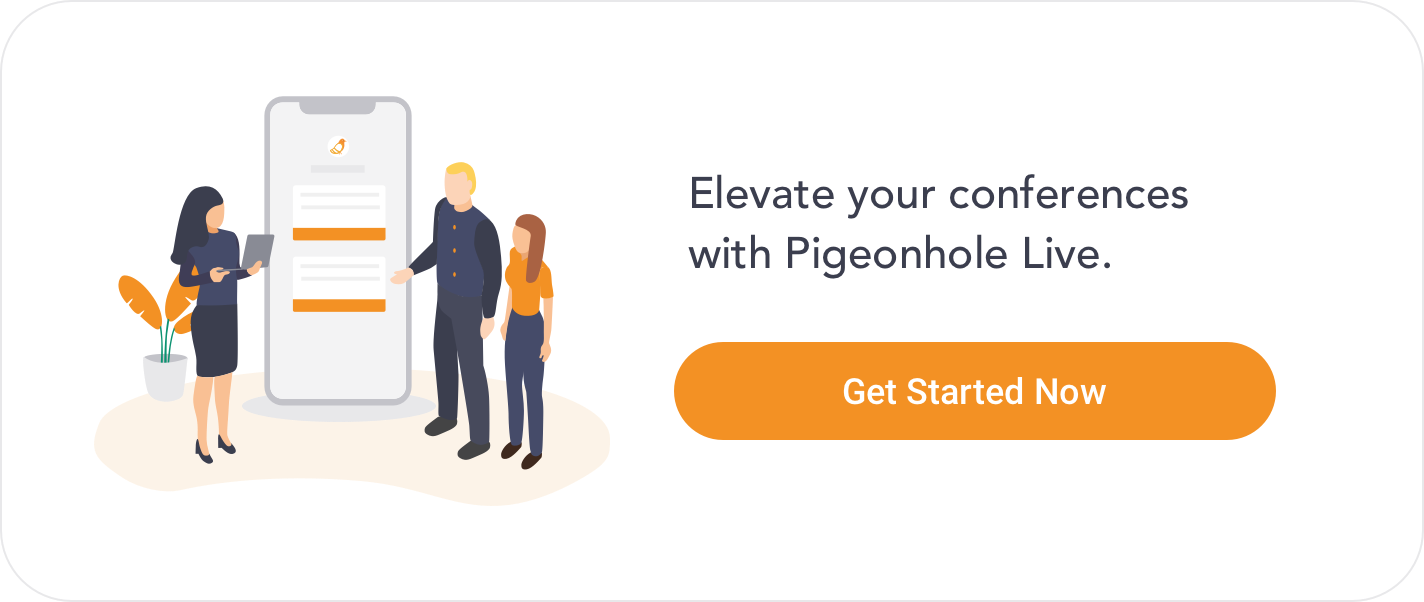Virtual events have become increasingly popular due to the convenience and accessibility they offer, but keeping attendees engaged can be a challenge. Fortunately, with Pigeonhole Live, there are many creative ways to make your virtual events more interactive and engaging. From live polls and Q&A sessions to word clouds and surveys, here are ten ways you can take your virtual events to the next level with Pigeonhole Live.
1. Share your event agenda
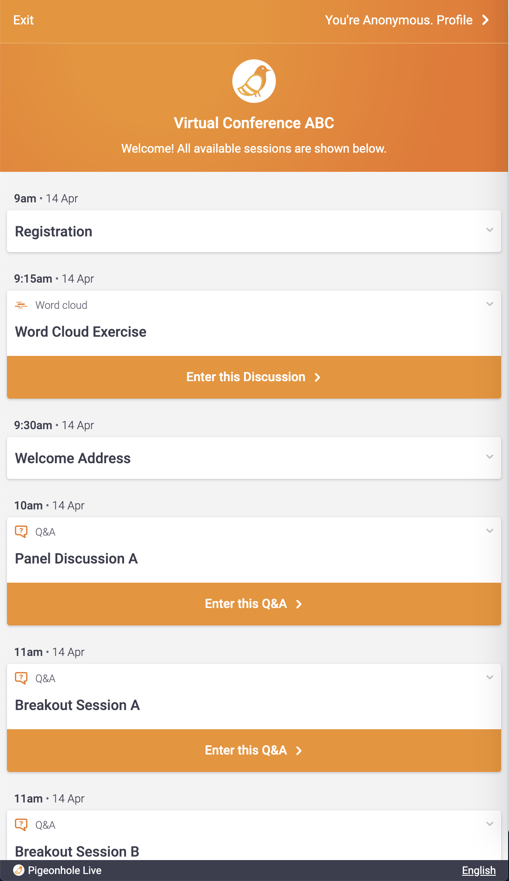
Easily let your audience know what to expect from the event. Use our Agenda view as your digital agenda, to not only inform people on what to expect but also guide them straight to the discussion.
2. Use seamlessly with video conferencing tools
Either integrate Pigeonhole Live with your favorite video conferencing tool or use it side by side. Pigeonhole Live works well as a companion to any platform you choose to use.
3. Integrate with your PowerPoint slides
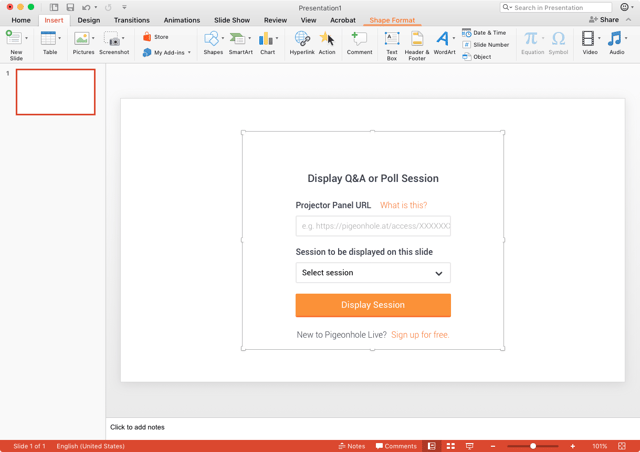 If you’re using your PowerPoint slides with your video conferencing tool, you won’t need to switch to a web browser to showcase the projector view for your Q&A or poll. Simply use our easy PowerPoint integration to put Pigeonhole Live directly into your slides, and make the viewing experience as seamless as possible for your audience.
If you’re using your PowerPoint slides with your video conferencing tool, you won’t need to switch to a web browser to showcase the projector view for your Q&A or poll. Simply use our easy PowerPoint integration to put Pigeonhole Live directly into your slides, and make the viewing experience as seamless as possible for your audience.
4. Hear from your attendees
Instead of managing a single chat window, guide the audience to engage in interactive activities. Ask questions, share their opinions in polls, compete in quizzes, and give feedback in surveys.
5. Run concurrent sessions
While you would have separate conference rooms to run breakout sessions in an in-person conference, Pigeonhole Live allows you to run concurrent interactive sessions. With our video streaming integrations, you can stream your panel discussion directly from a Pigeonhole Live Q&A session.
Each session also comes with its unique shareable link, so you can send attendees directly into a session of choice.
6. Provide written answers to questions
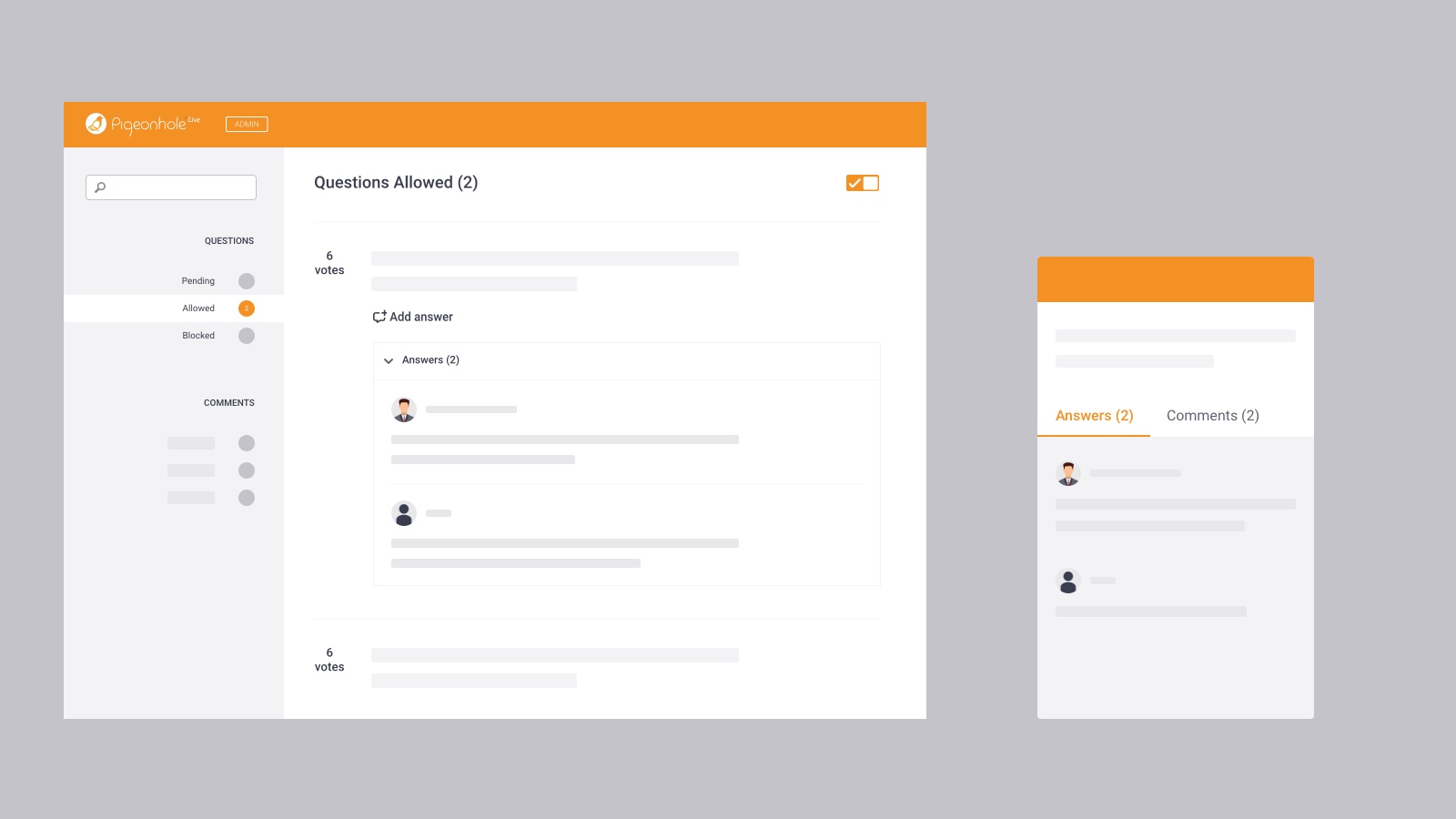 If you want to know whether your audience is engaged, look for frequent interaction. Engaged audiences may present an overwhelming number of questions during the Q&A session, making it difficult to answer them all. Rather than ignoring or extending the event, leave the Q&A open and address the questions later. This way, your audience can continue to get value from the event even after it has ended, and their participation is appreciated.
If you want to know whether your audience is engaged, look for frequent interaction. Engaged audiences may present an overwhelming number of questions during the Q&A session, making it difficult to answer them all. Rather than ignoring or extending the event, leave the Q&A open and address the questions later. This way, your audience can continue to get value from the event even after it has ended, and their participation is appreciated.
7. Read the mood in the room
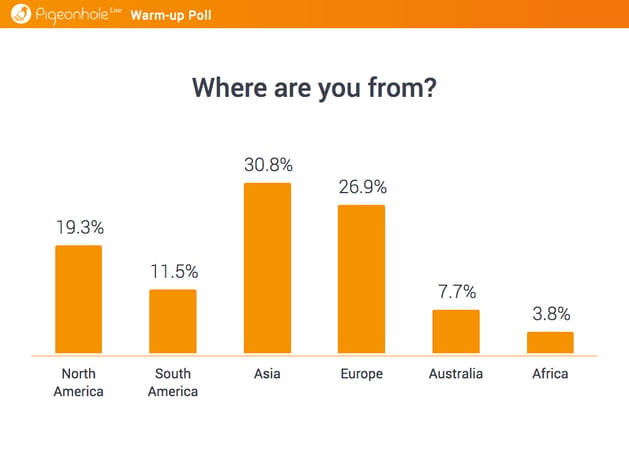 Invisible audiences can be hard to read during online events. To get a sense of the temperature in the virtual room, try setting polls during the event to check if they find the event enjoyable and useful. Not only are the responses useful, but you can also see how many people are engaged from the number of responses you get.
Invisible audiences can be hard to read during online events. To get a sense of the temperature in the virtual room, try setting polls during the event to check if they find the event enjoyable and useful. Not only are the responses useful, but you can also see how many people are engaged from the number of responses you get.
Questions you could ask:
- What's your breakfast of choice?
- Where are you from?
- What is your learning style?
- How has remote work been going for you?
- What's your favorite kind of vacation?
8. Direct attendees to a session easily
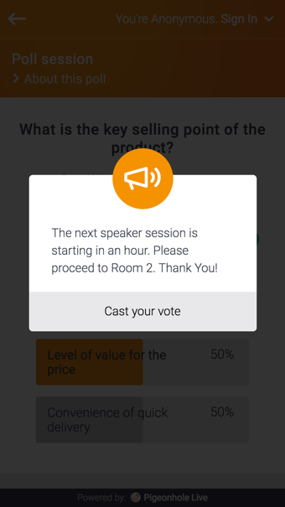 It can be tough to give announcements during a virtual event. Instead of interrupting the speaker, use our Announcements feature to set a notification to the audience. This could be a generic announcement providing the audience with information, or even directing the audience to the next session. This ensures that attendees don’t get lost, especially without real-life ushers to guide them.
It can be tough to give announcements during a virtual event. Instead of interrupting the speaker, use our Announcements feature to set a notification to the audience. This could be a generic announcement providing the audience with information, or even directing the audience to the next session. This ensures that attendees don’t get lost, especially without real-life ushers to guide them.
9. Hype up the crowd with some competition
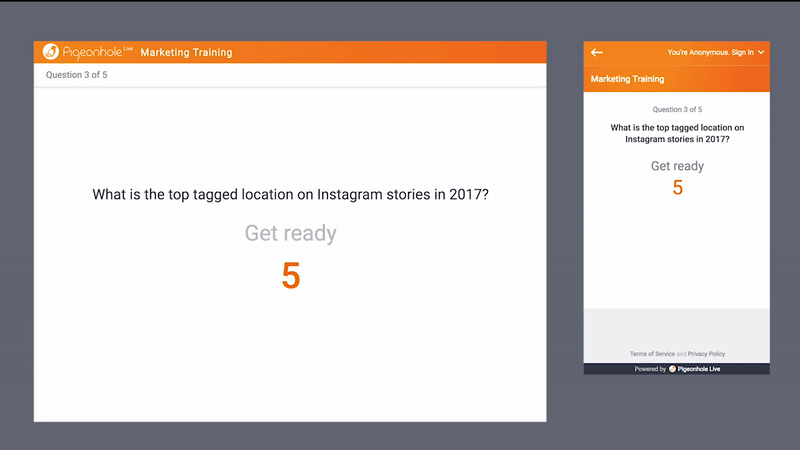 To spice up the event, run a quick quiz to energize your attendees. Similar to an in-person event, you could even provide a prize to the first-place winner to incentivize attendees and wow the crowd. Of course, the prize can’t be a physical item, so think along the lines of a $100 Amazon Voucher or a one-year subscription to the New York Times.
To spice up the event, run a quick quiz to energize your attendees. Similar to an in-person event, you could even provide a prize to the first-place winner to incentivize attendees and wow the crowd. Of course, the prize can’t be a physical item, so think along the lines of a $100 Amazon Voucher or a one-year subscription to the New York Times.
10. Gather event feedback
It’s important to get feedback from your attendees. Pigeonhole Live’s feature Answer Ratings also allows audiences to provide feedback on the way their question was answered immediately after it is answered. This collects feedback while it’s still fresh in their minds, and provides an in-depth look into the audience’s state of mind as the event is going on.
And as the event is ending, use the Announcements tool to direct people to a post-event survey, ensuring that they see and complete the call to action.
Elevate your virtual events with these tips
Creating engaging virtual events can be a challenge, but with the right tools and strategies, it's possible to make them successful. By using Pigeonhole Live, you can add interactivity and create a two-way conversation with your audience. This not only keeps them engaged during the event but also encourages post-event interaction. With the tips we've provided, you can take your virtual events to the next level and make a lasting impression on your audience.
Don't settle for boring virtual events!
